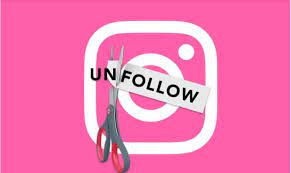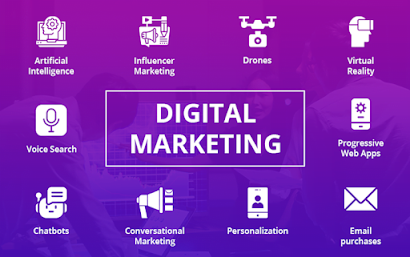The Downsides of Instagram Blogging
The Downsides of Instagram Blogging
While Instagram is
pretty much a must-have in everyone’s marketing strategy, it doesn’t come
without a few downsides.
1. The unfollows
Whether you like it or
not, people will unfollow your Instagram page.
It’s not something you
can avoid entirely. In fact, you’ll probably see your first unfollows shortly
after breaking through the 100-follower barrier.
The main reason why
people unfollow on Instagram is the pure loss of interest. That’s something you
can prevent by regularly uploading fresh content.
Others unfollow
because they reached the 7,500 follow limit. In order to follow new accounts,
they have to unfollow older accounts.
2. Your competitors use paid advertising
Instagram favors paid ads over real, organic posts – there’s no
way to sugarcoat it.
Of course, you should
regularly upload real, authentic posts as a way to keep current followers
engaged. But if you want to outperform your competition, be prepared to invest
in some Instagram ad campaigns.
On the flip side,
Instagram rolls out unobtrusive ads that pretty much look like organic
content.
Ads don’t appear as
pop-ups, banners, or anything that distracts users from their content
consumption experience. Rather, they appear identical to regular posts, videos,
and stories.
3. You need photography and video shooting
skills
It’s not rocket
science.
Instagram is, at its
core, a photo and video sharing tool. To get the attention of users, you need
to work on your photography and video recording skills.
As for your equipment,
any modern smartphone should do. You should also look into photo editing apps like Canva and VCSO to create more eye-catching images.
4. You need 10,000 followers for the “Swipe
Up” feature
Instagram’s Swipe Up
feature is great, but I didn’t add it to the “benefits” list for a
reason.
In order to use it, your account must either be verified or has
a minimum of 10,000 followers.
The Swipe Up feature
allows accounts to promote a link on an Instagram story entry. It can be to a
product page, registration form, download page, homepage — basically anywhere
you want traffic to go.
What makes it really
effective is that Swipe Up links are opened in-app. That allows users to take
action without ever leaving Instagram.
Unfortunately, there
are only two types of accounts that can use the Instagram Swipe Up feature:
- Business accounts with at
least 10,000
followers
- Verified Instagram accounts
(celebrities, public figures, and so on)
Getting the Swipe Up
feature is indeed a great milestone to have if you’re looking to blog on
Instagram. But it’s not a feature you can leverage to grow your brand from the
ground up on the platform.
5. Instagram Insights not as detailed as
services like Google Analytics
Having built-in
analytics is a nice touch.
However, Instagram
Insights isn’t comparable to full-on analytics services like Google Analytics.
Tracking your traffic
sources, for example, is important for gauging the success of your traffic
generation efforts.
You won’t get such data from Instagram’s homebrewed analytics tool.
Learn about the advanced features of Google Analytics here.
6. Hard to maintain long-lasting organic
reach
As a blogger, organic
traffic is the sweet reward of tremendous amounts of work.
It’s when your blog
starts to passively generate traffic from free channels like search engines,
Q&A sites, and social media.
Sure, you can also
build an organic presence on Instagram by posting regularly. The only problem
is, Instagram posts have a much shorter life cycle than blog content.
Remember, blog content
published through WordPress and similar platforms can draw traffic months or
years after being published.
Instagram posts, on
the other hand, typically reach their maximum engagement potential within 48
hours before stagnating.
Why is this a big
deal?
Unless you’re willing
to pump more money into ads, you’ll need to keep uploading posts and stories to
stay relevant.
Since Instagram relies on photo and video content, this could
lead to creative burnout faster than if you’re blogging.
There are, of course,
a few ways to keep Instagram content alive. The best one is to repost or
feature your content on another channel, like Facebook or your very own
blog.
I vote for the latter.
Remember, a
self-hosted blog has much better potential for organic traffic than an
ad-driven platform like Instagram.
The good news is,
there’s nothing stopping you from using
Three Instagram Bloggers to Follow
For your inspiration,
I’ve rounded up three of the best Instagram blogs in three popular niches:
Lifestyle — The Vogue Vanity
The Vogue Vanity is an
Instagram microblog that posts about hotels, beauty, fitness, and other
lifestyle topics.
It’s easy to see that
Daizy and Ankit, the people behind the account, love what they do.
Food — The Foody Guide
If you want to see how
foodies can thrive on Instagram, check out The Foody Guide.
Ehab, who runs the
microblog, fancies himself a pro eater — and has the content to support his
claim.
Travel — Travel Escapes
Lucas Jacobs uses his
Instagram page — Travel Escapes — to springboard his coaching and travel
blogging lifestyle.
His Instagram content
proves he has the photography and video shooting skills to make it big in the
travel industry.






Comments
Post a Comment